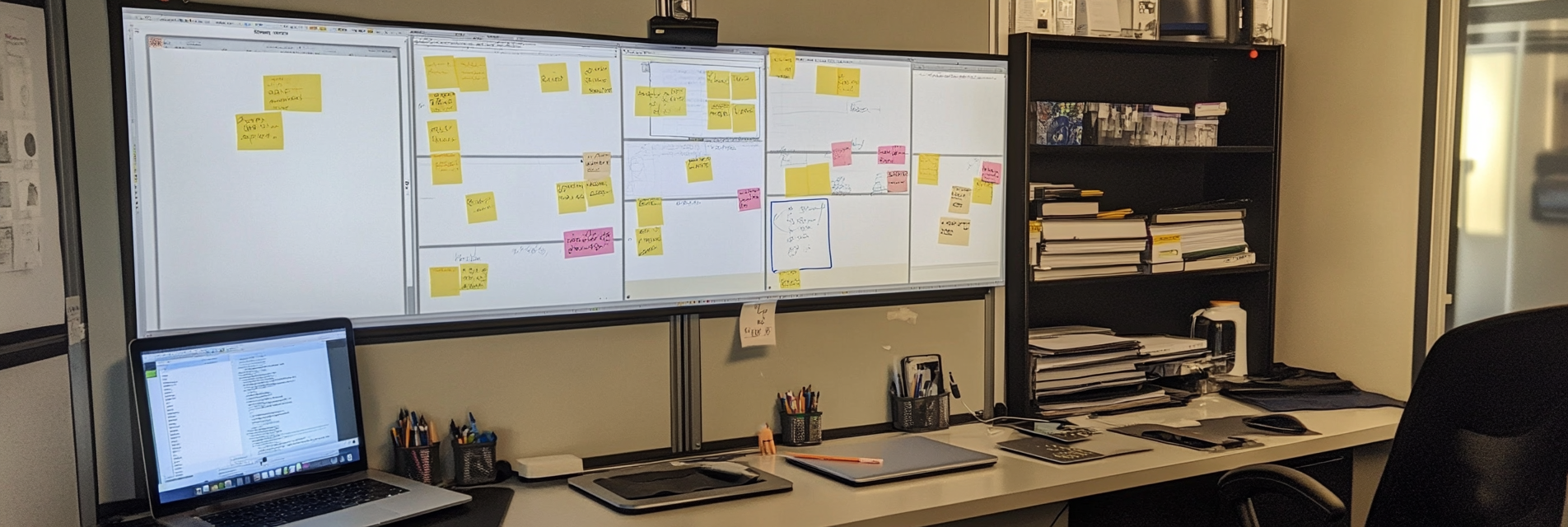
Strategic Thinking for New PMs—How to Plan for Long-Term Product Success
Master the art of strategic planning to drive sustainable product growth
As a new product manager, you’re likely focused on delivering features, meeting deadlines, and handling day-to-day operations. However, the key to achieving long-term success for your product lies in strategic thinking. Strategic planning allows you to step back, understand the bigger picture, and align your efforts with broader business goals. In this article, we’ll explore how new PMs can build and execute effective product strategies that focus on long-term success rather than just short-term wins.

ProductCents helps you create and deliver the most innovative products in the market
Create your free account
Why Strategic Thinking Matters for Product Managers
Aligning with Business Goals
One of the primary reasons strategic thinking is essential for product managers is its ability to ensure alignment with overall business goals. A product manager needs to understand how their product fits within the broader context of the company's mission, vision, and long-term objectives. Without strategic alignment, a product can become disconnected from business priorities, leading to inefficiencies and missed opportunities. Strategic thinking allows you to connect your product’s goals with the company’s larger vision, ensuring that the product you’re building is truly adding value to the business.
Focusing on the Big Picture
As a product manager, it’s easy to get bogged down by day-to-day tasks and urgent deadlines. However, focusing solely on the immediate needs of the product can limit its long-term success. Strategic thinking enables you to look beyond daily operations and consider the bigger picture—how your product fits into the market, how it meets user needs, and how it evolves over time. By zooming out, you can ensure that every decision you make today contributes to your product’s long-term growth and sustainability.
Adapting to Change
The business and product landscape is constantly changing. New technologies, emerging competitors, shifting customer expectations—all of these factors can disrupt the status quo. Strategic thinking allows you to adapt to these changes by making informed decisions that keep your product on track despite external fluctuations. By anticipating future trends and understanding market dynamics, you can position your product for long-term success and ensure it remains relevant as the market evolves.
Anticipating Challenges
Strategic thinking also helps you anticipate potential challenges and risks before they become major roadblocks. Whether it's managing competition, dealing with regulatory changes, or adapting to shifts in user behavior, a solid strategy equips you with the foresight to navigate these challenges. By identifying potential obstacles early, you can develop plans to mitigate them, ensuring that your product stays on course toward long-term success.

How to Build a Strategic Product Plan
Define Your Product Vision
The first step in building a strategic product plan is to define your product vision. Your vision is the foundation of your product strategy—it articulates why the product exists, who it serves, and what it aims to achieve. A clear product vision provides direction for your product development and helps align the efforts of cross-functional teams. It should be aspirational yet grounded in reality, focusing on the long-term impact you want your product to have. Take the time to develop a compelling product vision that resonates with both your team and your customers.
Conduct Market and Competitive Research
A key component of strategic thinking is understanding the market and competitive landscape. Conducting thorough market research helps you identify opportunities, spot trends, and assess how your product compares to existing solutions. Competitive analysis, meanwhile, provides valuable insights into what others are doing right (or wrong). Use this data to identify gaps in the market that your product can fill or areas where you can outperform competitors. This research will inform your strategic decisions and ensure your product remains competitive in a crowded market.
Set Long-Term Goals and KPIs
Strategic thinking involves not only understanding where your product is today but also where it needs to go. To achieve long-term success, you need to establish clear goals and key performance indicators (KPIs) that will guide your product’s development. These goals should be aligned with your vision and help you measure progress toward your objectives. Long-term KPIs might include market share growth, customer retention, user engagement, or revenue targets. By defining measurable goals, you can track your progress and ensure that every decision contributes to your product’s long-term success.
Create a Roadmap Aligned with Your Strategy
Once your long-term goals are set, the next step is to create a product roadmap that reflects your strategic vision. The roadmap should outline the key initiatives, features, and releases that will move the product toward its objectives. A well-crafted roadmap doesn’t just focus on individual releases or tasks—it links each milestone to a broader strategic goal. As you build your roadmap, keep in mind that it should be adaptable. The product landscape can change, so your roadmap should evolve over time while staying focused on the long-term vision.

ProductCents helps you create and deliver the most innovative products in the market
Create your free account
Executing the Strategy: Turning Vision Into Action
Build a Cross-Functional Team
Executing your product strategy requires the collaboration of many different teams, from engineering and design to sales and marketing. Strategic thinking helps you identify the right team members who will play key roles in bringing your vision to life. A cross-functional team ensures that all aspects of the product are considered and that each department is aligned with the product’s long-term goals. As a product manager, you’ll need to foster strong communication between teams and create a culture of collaboration to ensure the strategy is executed successfully.
Communicate the Strategy Clearly
Successful execution of a product strategy depends on clear communication. As the product manager, it’s your responsibility to communicate the vision, goals, and roadmap to all stakeholders. This includes not only your internal team but also external stakeholders such as executives, investors, and customers. Regularly update stakeholders on progress and adjust the strategy as needed based on feedback and market developments. Clear communication keeps everyone aligned and ensures that the strategy remains on track, even as priorities shift.
Monitor and Measure Progress
Strategic thinking involves constant evaluation and adaptation. As you execute your product strategy, regularly track progress against your KPIs. This allows you to identify areas where things are going well and areas that require attention. Use data to inform your decisions and be prepared to pivot if necessary. Continuous monitoring also helps you identify emerging trends and opportunities that can be leveraged to keep your product on the path to long-term success.
Iterate and Improve
The product development process is rarely linear, and successful product managers know how to adapt. Strategic thinking involves the ability to iterate and improve your approach based on real-world feedback and data. Continuously gather insights from users, analyze market trends, and adjust your strategy accordingly. By staying agile and open to change, you can ensure that your product remains competitive and aligned with customer needs over the long term.

Conclusion
Embrace the Power of Strategy
Strategic thinking is essential for product managers who want to drive long-term success. By aligning with business goals, focusing on the bigger picture, and executing a thoughtful strategy, you can build products that not only meet immediate needs but also drive sustained growth. The ability to think strategically sets successful product managers apart, allowing them to make informed decisions, anticipate challenges, and guide their products toward lasting success.
Keep Your Vision Clear
Remember, strategic thinking starts with a clear and compelling product vision. Without a well-defined vision, your product’s development will lack direction and purpose. Always keep the long-term impact of your product in mind, and ensure that every decision aligns with your broader strategy. A strong vision serves as the North Star for your product and helps guide your team through both successes and setbacks.
Adapt and Evolve
The product landscape is constantly evolving, and successful product managers know how to adapt. By staying flexible and responsive to market changes, customer feedback, and new opportunities, you can ensure that your product remains relevant and successful over time. Strategic thinking is an ongoing process that requires continuous learning and adjustment. Keep iterating on your strategy to stay ahead of the curve.
Your Journey Starts Now
As a new product manager, you are embarking on a journey that will shape the future of your product and your career. By applying strategic thinking to your daily work, you’ll be well-equipped to build products that drive long-term success. Stay focused on the bigger picture, adapt to change, and always keep your end goals in mind. The future is in your hands—plan for it, execute it, and watch your product thrive.
ProductCents helps you create and deliver the most innovative products in the market
Create your free account
ProductCents
Make products make sense

ProductCents helps you manage the risk and reward of all your customer problems and product opportunities